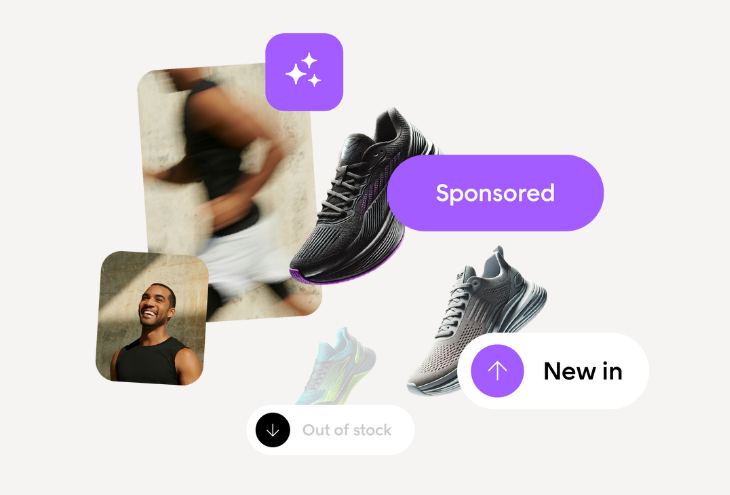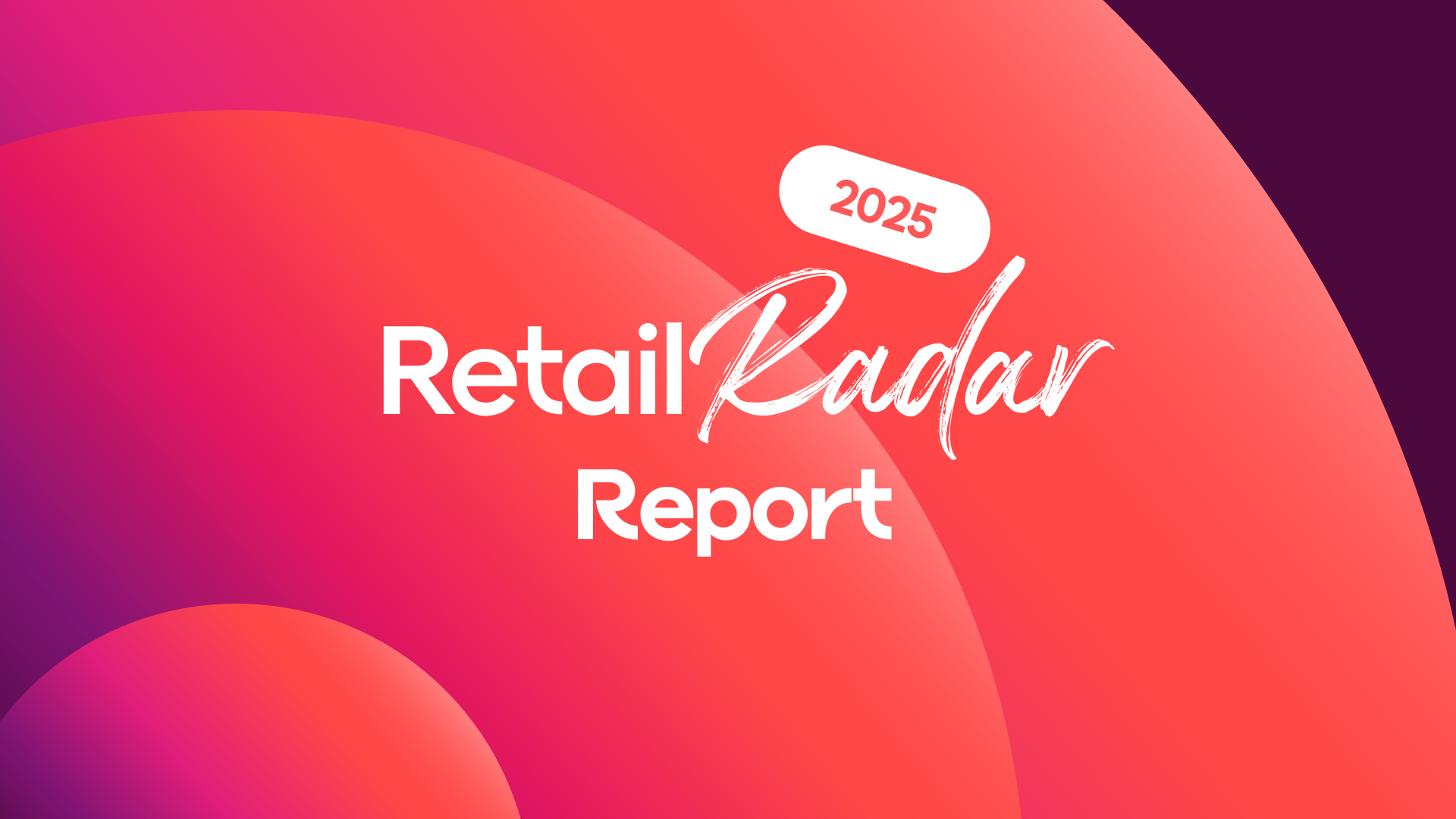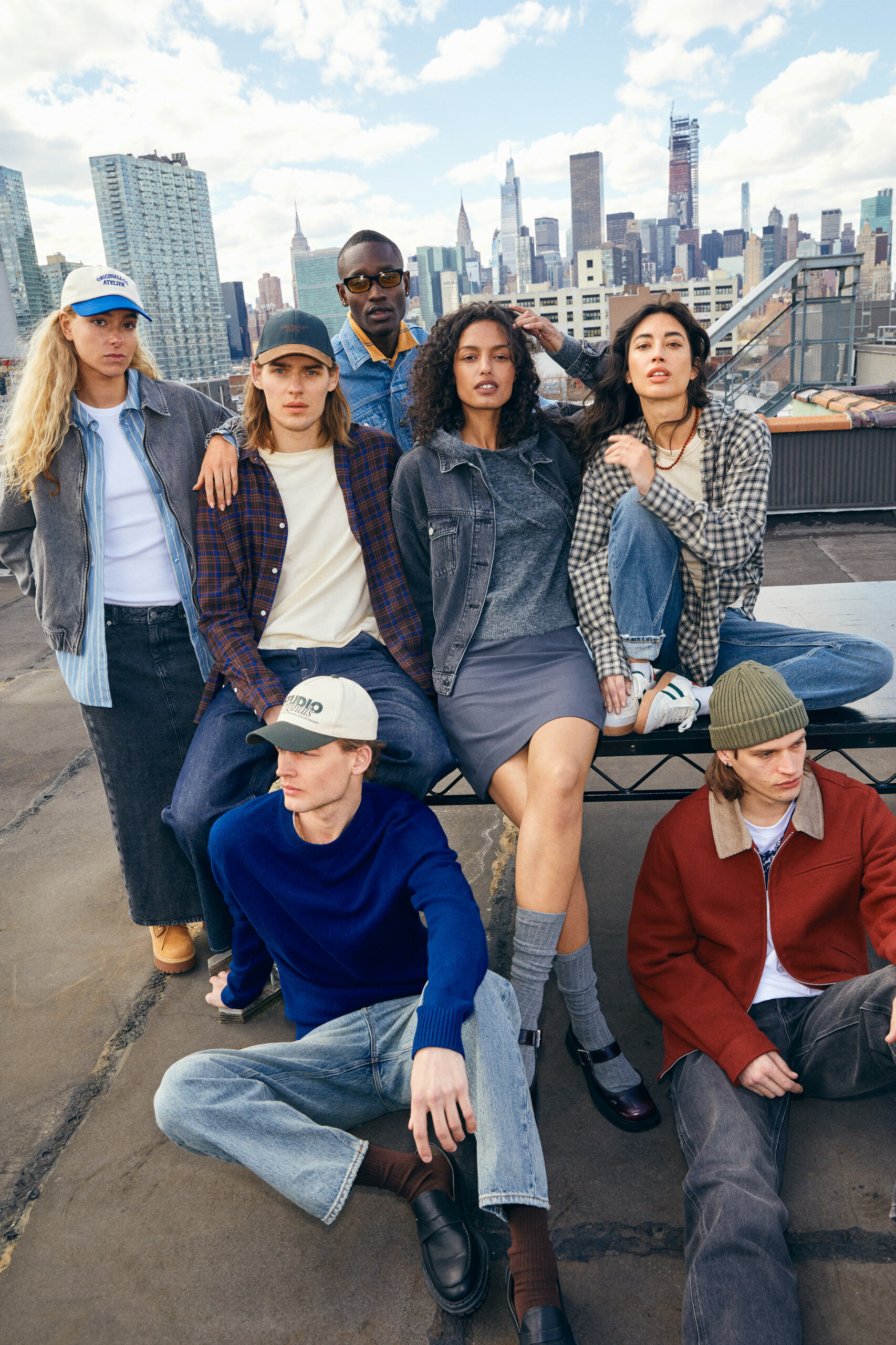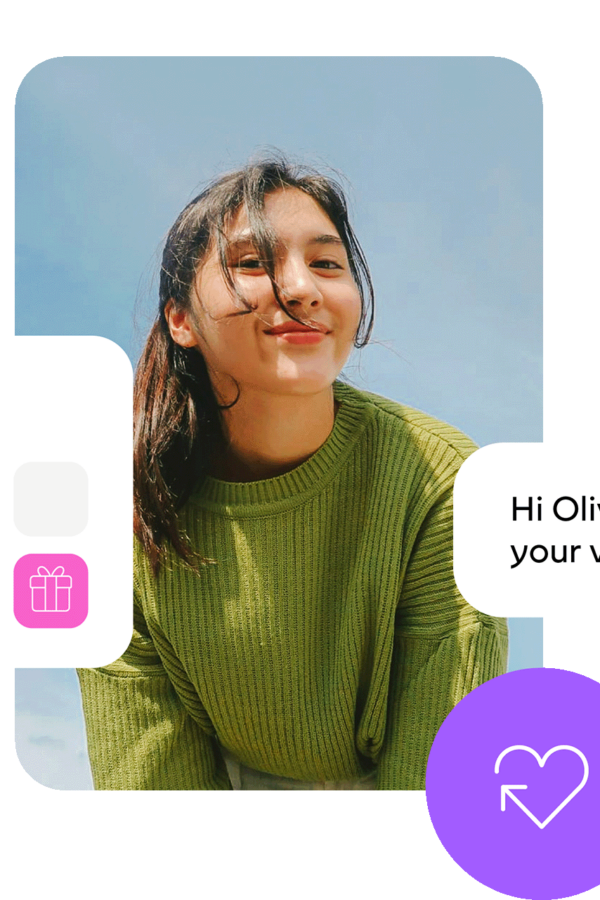Here’s what we mean – most people want to buy from people or brands they know. However, they would much rather buy from people or brands who know them.
So what is the shortcut? Onsite personalization.
Why onsite personalization?
Onsite personalization done right will help you sell more, add more emails to your newsletter list (without having to offer discounts), improve your customer retention rate, and generate more loyal customers.
Would you be surprised to learn that your customers expect you to know who they are when they return to your website? Accenture surveyed over 8,000 consumers about personalization, and 91% answered that they are more likely to shop with brands who recognize, remember, and provide them with relevant offers and recommendations.
This is important because most e-commerce brands are trying to catch the same fish as everyone else. The standard e-commerce playbook is made up of email- and influencer marketing, affiliate programs, and Facebook, Instagram, and Google advertisement.
Attention is already a precious commodity. And contrary to popular belief, our attention spans are not declining. We are just becoming better at filtering out — and quicker to dismiss — what’s not interesting to us. This is where onsite personalization comes into play. And in this post, you are going to learn 3 ways you can use and improve your onsite personalization.
A quick introduction to onsite personalization
Most people talk about personalization like it’s just some random tactics you can apply on any site, in any situation. But the truth is that the success of your personalization program depends on the quality of your data. Nothing else.
Onsite personalization is enabled by a mix of contact information, individual website activity, and attribution. Because in the end, personalization needs to deliver value for your customers first. Not the other way around.
With that in mind, a good onsite personalization strategy should (from your customer’s point of view):
- “Give me relevant recommendations I wouldn’t have thought of myself”
- “Communicate with me when I’m in the mood to buy, or learn something new“
- “Remind me of things I want to remember”
- “Recognize me, no matter how I interact with your brand“
- “Share valuable information in a format I like“
If you follow these 5 points together with the tips and tactics in this post, you will be able to improve your onsite personalization strategy almost instantly. Without further ado, let’s jump right in.
1. Collect quality data
Onsite personalization starts with data collection. Trying to personalize without using data is like trying to fly a kite by blowing at it. Impossible. You need to know more about your current customers before you can serve them with personalized offers or messages.
The best way to collect data you can use in personalization is by:
- Doing a quick and dirty conversion analysis
- Collect individual-level data
- Ensure your data is synced to where it needs to be
Let’s go through each point, step-by-step.
Quick and dirty conversion analysis
The best place to start improving your onsite personalization is by doing a quick and dirty conversion analysis. If you don’t know what your customers experience, you will have a hard time effectively using the right personalization tactics.
You want to do a customer journey walkthrough. Go through each step of your most important customer journey(s), from seeing the first ad, to visiting the website, to completing a purchase.
Look for these 4 things:
- Clarity – Is every step as clear as it could be?
- Friction – What’s causing doubts and hesitation?
- Anxiety – What makes me cringe?
- Distraction – Are there multiple distractions? Do I know what I want to do on the page?
Here is a link to a spreadsheet you can use: Conversion Analysis Spreadsheet (Click on File > Make a copy)
Why these four things?
Personalization is one of the most effective ways to add value at certain points in your customer journey — but only if done right. But personalizing an offer just to personalize “something” is probably not going to give you the results you’re looking for. Worst case — it might even scare some people off. Personalization is a great way to increase clarity, decrease friction, reduce anxiety, and minimize distractions. These areas should be where you start.
Your findings will also help you figure out what needs to be done in other parts of your customer journey that start or end on your website — like your email newsletter for example.
Sidetrack: Personalization in email marketing
At Triggerbee, we publish a yearly report called Personaliseringsindex. Once a year we manually analyze over 100+ of Sweden’s largest e-commerce websites based on 98 criteria and grade them based on how good they are at personalization. For example, we were surprised to find out that only 51% of e-commerce websites personalize their welcome emails for new subscribers, and here’s why:
The welcome email has an 87% higher open rate compared to regular newsletters, a 47% higher read-rate, and is more or less your only opportunity to ensure that your next email campaigns do not get buried in the promotional tab (by asking the recipient to answer a question or reply to your welcome email).
And as you can see in the graph below, response rates increase by 5-10% immediately when you personalize your message to the recipient.
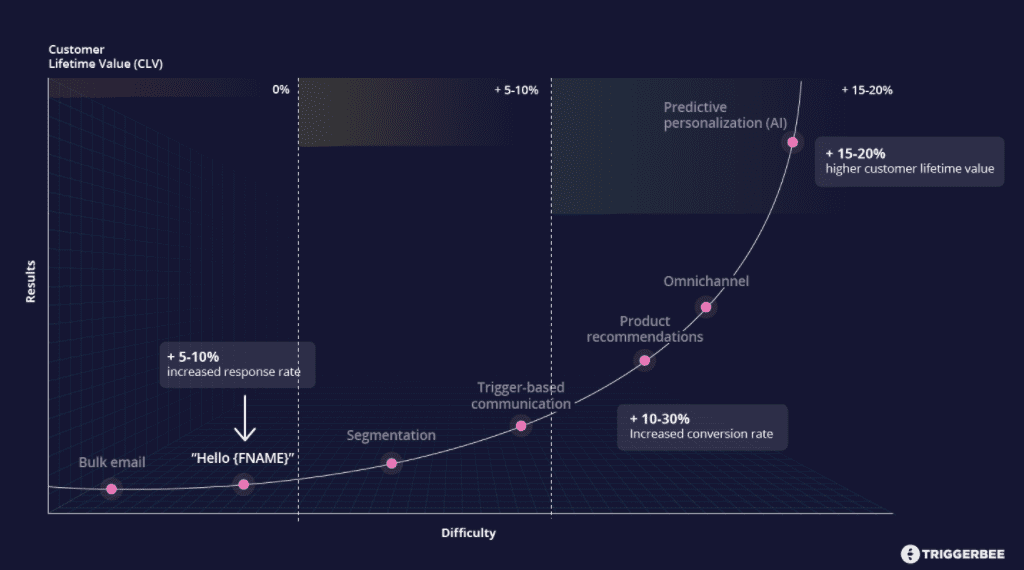
Okay, back to collecting quality data.
Collect individual level-data
It’s no secret that web analytics is a must for an e-commerce store, and Google Analytics is more or less the industry standard. But for onsite personalization, you need to collect data on an individual level and be able to identify your customers. That’s where Google Analytics (GA) falls short. The data in GA is static and non-actionable. You can’t export or sync your GA data into Voyado, and use it to enhance your targeting.
If you’re serious about onsite personalization you should consider using software like Triggerbee, which collects individual-level data from your website and has a native integration with Voyado. Not only will you be able to enhance your email targeting by using data from your contact’s website activity. You’ll also be able to create personalized messages on your website to specific audiences in Voyado.
Connecting your email marketing software (like Voyado) to an onsite personalization platform (like Triggerbee) will help you create relevant and personalized customer journeys across your most important channels.
And one of the easiest ways to personalize your customer journey is to…
2. Tailor your message to the source
If you know who your customers are and where they are coming from there is a good chance that you can increase your conversion rate by 510% and your click-through rate by 484% (on your website) — just by personalizing your messages to your visitor’s referral source. This technique comes from message matching in advertising, where you match the same headline on an ad someone clicks, to the landing page people see next.
Let’s pretend this is your baseline offer: “Sign up for our newsletter and get 10% off on your first purchase”
Instead of showing the same message to everyone (including existing subscribers), you can increase your conversion rate just by mentioning the referral source.
For Instagram visitors: “Instagram visitors get 10% off on their first purchase”
For retargeting ad visitors: “Welcome back! You can still get 10% off on your first purchase”
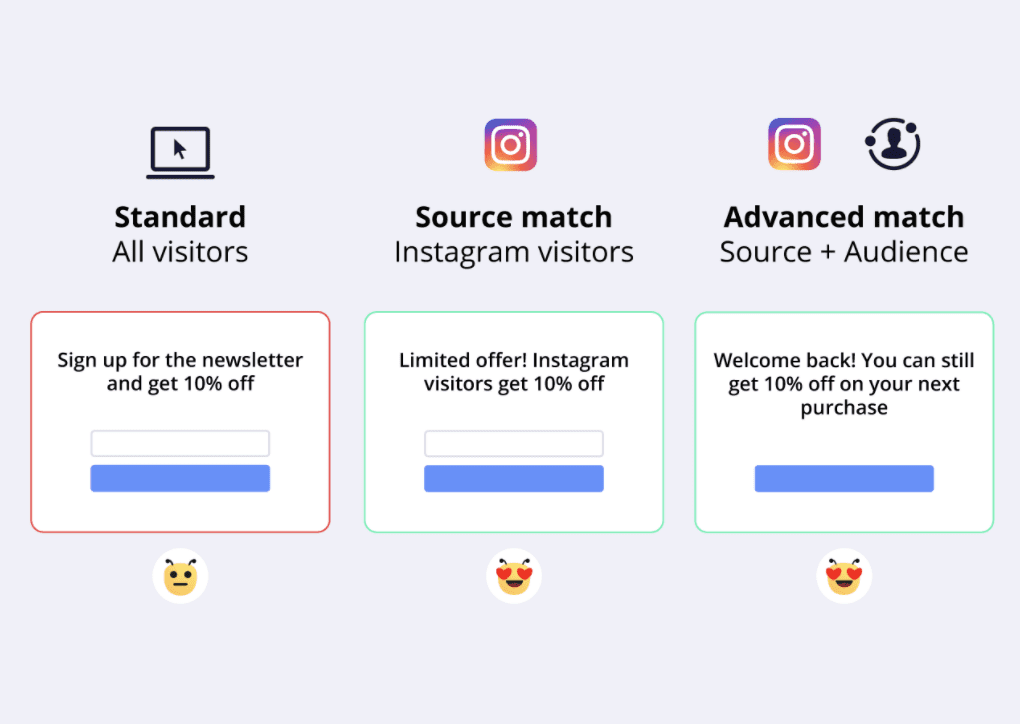
See how simple that is?
Even though it’s not exactly 1-to-1 personalization, it’s a simple tactic that instantly makes your communication a lot more relevant (and as a result, increases your conversion rate).
Bonus: Onsite Personalization for influencer marketing
Most e-commerce stores use influencers to market their products. Here’s how it usually works:
An e-commerce store provides an influencer with a link and a discount code for 20% off. The influencer posts the link and mentions the discount code in their Instagram bio, in their Youtube descriptions, and on their blog, etcetera. When someone from their audience clicks on that link they might land on a product page. Or even worse, a category page listing every product the store has to offer. But no mention of a discount code anywhere. No mention of the influencer whose link you just clicked. And no indication that you landed on the page you wanted to land on.
Remember the conversion analysis we talked about earlier? Let’s take a look at how our 4 points hold up when applied to the above example:
- Clarity – “no mention of any discount code? Link said it would be a discount code…”
- Friction – “where can I find that dress she tagged? Am I even on the right page?”
- Anxiety – “did the discount code expire? Can’t see it anywhere”
- Distraction – “holy fork is that a cat dancing to Gangnam style? I’ll get back to finding the dress later”
Experiences like these are why most of us have trust issues. The solution? Greet any visitors coming from an influencer link with a message from the influencer. The message should repeat the discount code, where they can find the dress they’re looking for and any other information mentioned in the campaign. Like this:
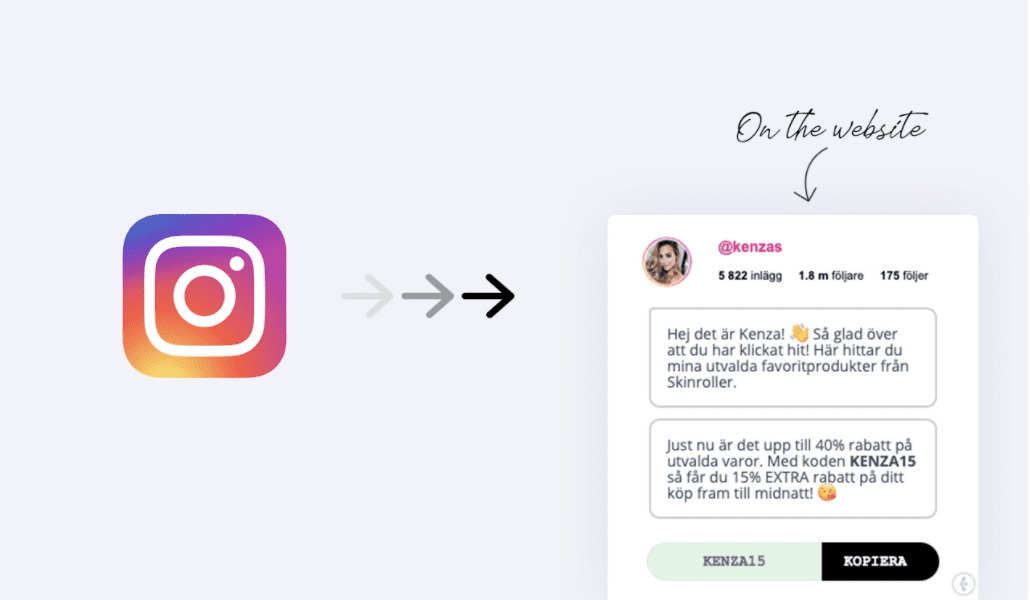
If you’re using Voyado together with Triggerbee, creating personalized onsite campaigns like this is easy.
Chances are that some of the people who clicked on the influencer’s link already exist in your Voyado audience. A few might even be gold-status members in your loyalty program. And if that’s the case, would you want to miss an opportunity to show them that you know who they are?
3. Audience-specific messages and reminders
Personalizing offers and messages to specific audiences on your website is one of the most effective ways to improve your onsite personalization strategy. Messages tailored to your audience are an important part of your customer retention strategy. Your customer retention strategy is how you maximize the profitability of your online store and increase the lifetime value of each customer.
While most e-commerce stores focus on acquiring new customers, retention is the most important driver of long-term growth. But what does retention have to do with onsite personalization? The expectations of your returning customers vs new customers are vastly different. Someone who visits your website for the first time doesn’t know what to expect other than the website to work properly.
But a recurring and loyal customer? A completely different story.
If you want to improve your onsite personalization, you should focus on the moments that add the most value. And one of those moments is when your most loyal customers return to your website. If you have a lot of recurring customers, they are most likely to browse your website once in a while. And you would be surprised how many of them sign up for offers, add items to their cart, check out items on sale and then leave. You can incentivize them by showing audience-specific, personalized reminders.
A surefire way to increase both loyalty and retention is to remind your returning customers of an unused discount code.
Like this:
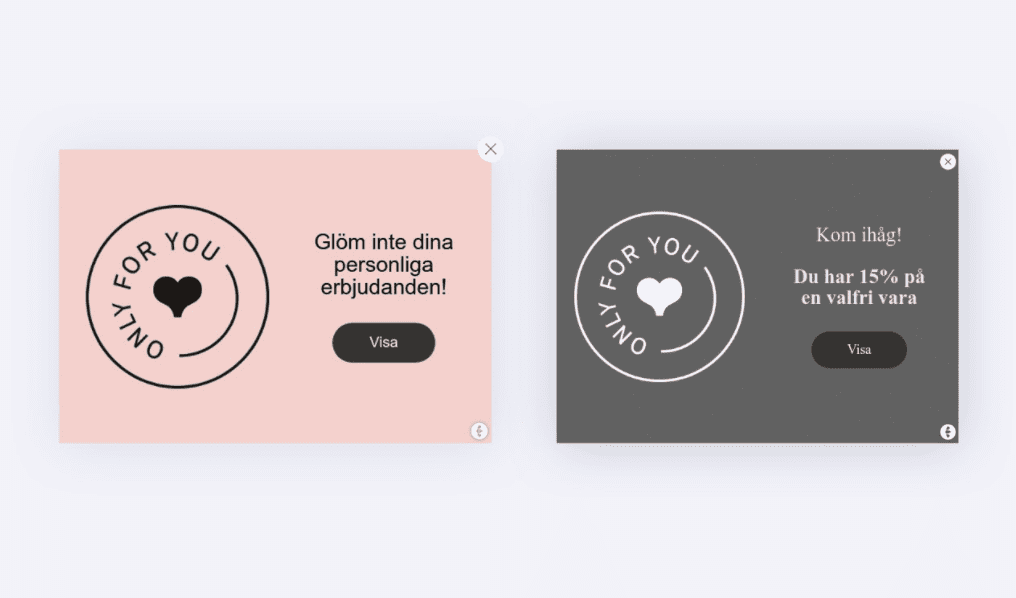
Popups and modals are great ways to deliver messages to your customers quickly, and without changing the structure of your site. As a bonus, they are easier to target and personalize compared to static elements on your website.
Audience-targeted messages and reminders like these could easily increase your click-through rate by 484%.
Summary
- Best-in-class retailers are using personalization to make their shopping experience frictionless, easy, and seamless across 2-4 channels.
- Success in personalization doesn’t necessarily mean developing a unique experience for every customer at every step of the way.
- The goal for true personalization leaders in e-commerce is to use their data and technology to personalize critical touchpoints in a way that best drives value for the customer.
- One of the fastest and easiest ways for most companies to get started with onsite personalization is to start collecting data on an individual level and connect their website activity with their email database.
- Having a seamless connection between your email database and your website can make a world of difference when it comes to building loyalty and creating relevant communication.
 Voyado Engage
Voyado Engage  Voyado Elevate
Voyado Elevate  Powered by Bonnie AI
Powered by Bonnie AI 